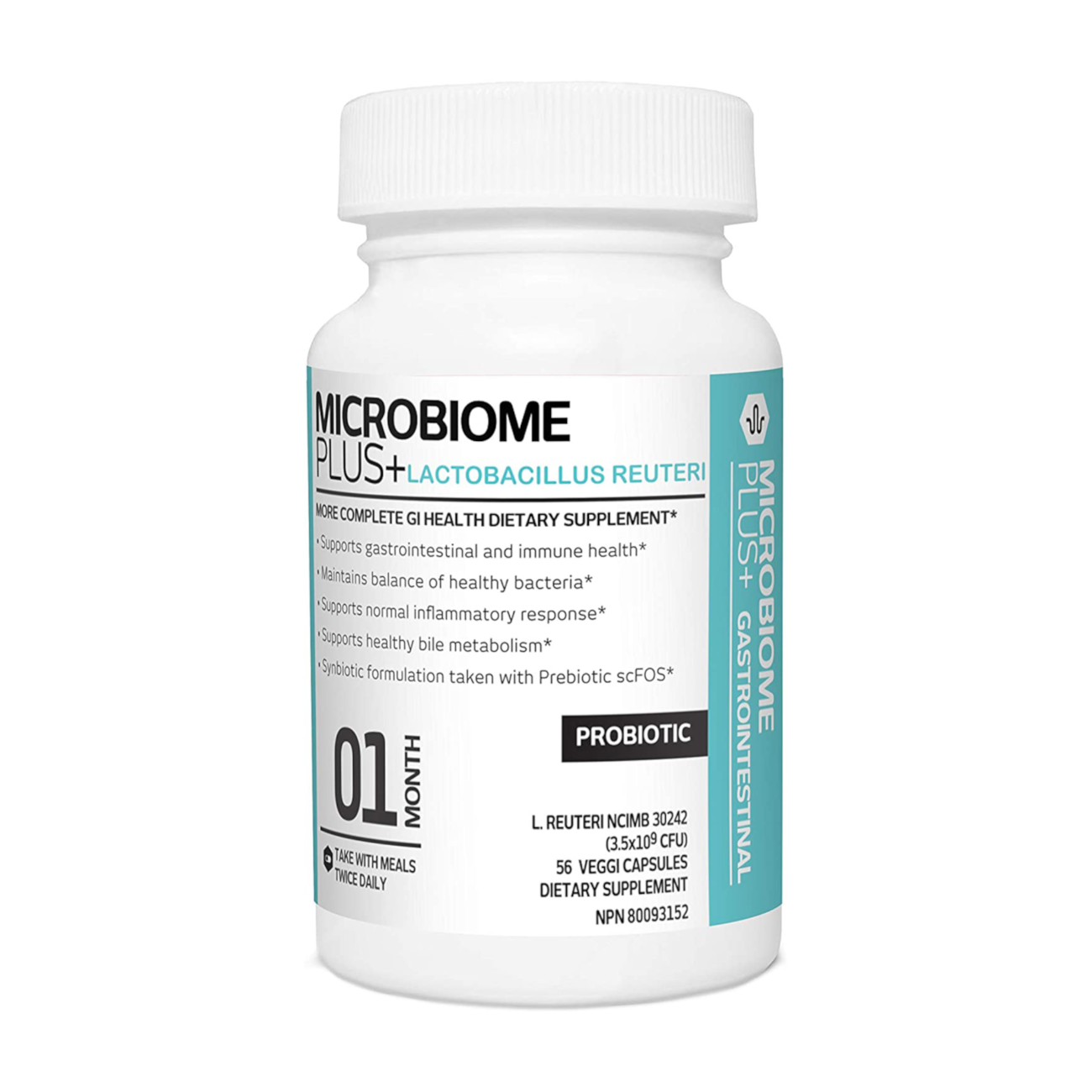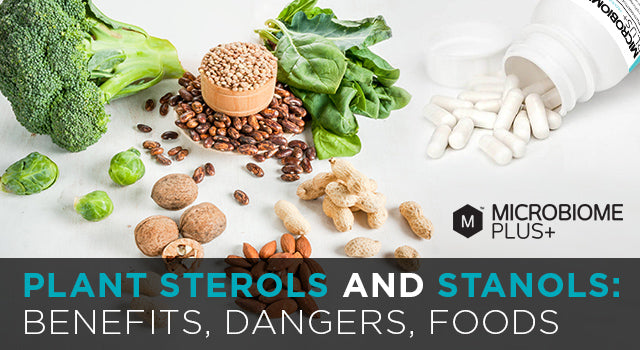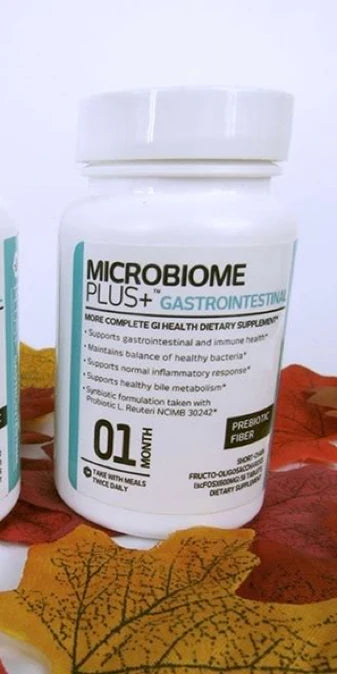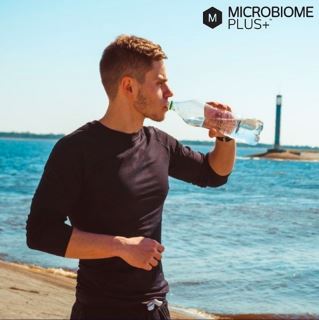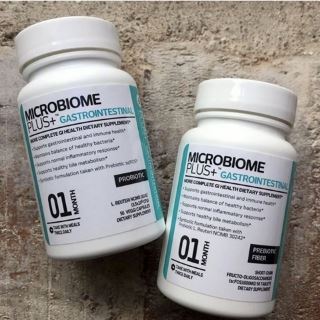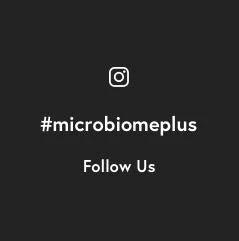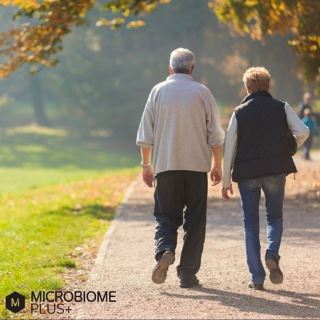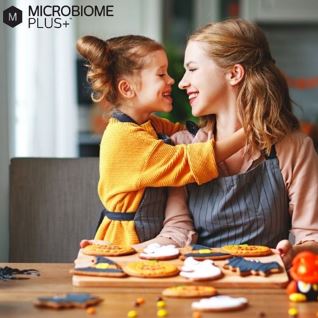Plant sterols are fatty molecules naturally found in some vegetables and fruits. They’re also added to margarine to trick your body into absorbing less cholesterol. What does the research say about the potential benefits and dangers of plant sterols? Can probiotics be combined with them or used as an alternative? Read on as we explore this controversial topic in depth.
Disclaimer: This post is for informational purposes only. Please consult your doctor about your health-related concerns and medications before taking any supplements.
What Are Plant Sterols and Stanols?
Overview
This post will go over the complete evidence on the pros and cons of foods and supplements with plant sterols and stanols. We’ll highlight some controversial research that is rarely talked about.
Pros:
- Evidence for lowering high cholesterol
- May be more effective for people who absorb cholesterol in excess than for those who produce too much
- Possibly safe for most people
- High in some whole foods that support a healthy gut microbiome
- Added to margarine, spreads, and yogurt
Cons:
- Side effects may include gut discomfort, fatty stools, and lower nutrient levels
- Unhealthy sources of plant sterols may harm the gut microbiome
- Long-term side effects unknown
- Quality clinical trials lacking to confirm many health benefits
- Conflicting data on heart health with some studies reporting a link between plant sterols and heart disease
We go over the cons in more detail in this follow-up post, which reveals the findings of a ground-breaking 2020 scientific study about the dangers of plant sterols (Helgadottir et al., 2021; Helgadottir et al., 2020).
Definition
Plant sterols and stanols are fatty molecules similar to cholesterol (Patel, 2008).
Exclusively plants can produce plant sterols. Many vegetables and fruits abound in them. So far, scientists have identified over 250 plant sterols. The main ones in our diet are beta-sitosterol, stigmasterol, and campesterol (Vezza et al., 2020).
Plant stanols are found in plants in tiny amounts, but most are artificially processed (hydrogenated) plant sterols.
We absorb plant sterols in tiny amounts compared to cholesterol (~50% of cholesterol, <5% plant sterols, <0.5% plant stanols from food) (Fransen et al., 2007; Patel, 2009).
Read more about the difference between cholesterol and plant sterols in general here.
How They Work
Plant sterols are absorbed by the gut in place of some cholesterol. In turn, the gut absorbs less cholesterol, which lowers its blood levels. Levels of plant sterols in the blood, however, increase (Weingärtner et al., 2009).
Plant stanols pass through the gut, mostly without being absorbed. They bind to cholesterol-rich bile on the way out, removing more cholesterol from the body and lowering its blood levels. Some fat-soluble vitamins also get flushed out, however (Weingärtner et al., 2009).
Plant sterols or stanols are usually esterified in supplements, margarine, spreads, and yogurts. This means that they are chemically processed and joined with fatty acids into esters. This makes them more soluble in water and increases their bioavailability (Fransen et al., 2007).
Do We Need More Data?
Ever since plant sterols were first discovered, scientists can’t seem to agree: are they essential micronutrients or potentially harmful compounds?
Advocates claim plant sterols are mostly beneficial. They’re purported to help balance the immune response and cholesterol levels, enhance mitochondrial and gut health, and reduce oxidative stress and inflammation (Vezza et al., 2020).
Skeptics warn about the lack of long-term safety research and possibly detrimental effects on heart health and nutrient status.
Regulatory health bodies across the globe are equally divided.
In 2000, the US Food and Drug Administration (FDA) allowed a health claim for reducing the risk of coronary heart disease for foods that contain phytosterols and are low in saturated fat and cholesterol. This is the 12th time the FDA has authorized a health claim for a supplement ever (Weingärtner et al., 2009).
The FDA claim is valid only for esterified plant sterols and stanols. Experts wrote to the FDA to request expanding the rule to natural (non-esterified) plant sterols. In 2010, the FDA amended this rule to apply to all conventional foods that include mixtures of esterified and non-esterified plant sterols derived from vegetable oils and tall oil (from Kraft wood pulping).
Yet, the FDA stuck to saying there’s not enough evidence that plant sterols can have notable health risks. But it’s not like that in some other parts of the world.
Health Canada now allows a limited range of foods enriched with plant sterols. The regulations eased up in 2010, after an initial ban of these foods based on a 2000 animal study reporting the negative effects of plant sterols on heart health and red blood cells (Ratnayake et al., 2000; Weingärtner et al., 2009).
The European Food Safety Authority states that the safety of plant sterols has not been adequately established. They paid special attention to studies showing plant sterols may reduce the levels of carotenoids (provitamin A) and other fat-soluble vitamins. Foods enriched with plant sterols have to carry a label that advises children, pregnant, and breastfeeding women to avoid them in the EU.
Potential Benefits of Plant Sterols and Stanols
Likely Effective for:
1) Lowering Cholesterol in Familial Hypercholesterolemia
Clinical studies show that plant sterols can lower total and “bad” LDL cholesterol levels in people with familial hypercholesterolemia, a genetic condition that can cause extremely high cholesterol.
Compared to a cholesterol-lowering diet alone, taking plant sterols additionally lowers total cholesterol (by 12 mg/dL) and LDL cholesterol (by 23 mg/dL) in this population (Malhotra et al., 2014).
In clinical trials, margarine spreads or yogurt with plant sterols (reaching 1.6-2.3 g/day) reduced total cholesterol by up to 11% and LDL cholesterol by up to 14% in patients with familial hypercholesterolemia. But, plant sterols did not reduce triglyceride levels or increase “good” HDL cholesterol levels in most of these trials (Amundsen et al., 2004; O'Neill et al., 2005; Guardamagna et al., 2010; Vásquez-Trespalacios & Romero-Palacio, 2014).
2) Lowering High Cholesterol in General
Similarly, clinical studies show that plant sterols (alone or with plant stanols) reduce total and LDL cholesterol in people with high cholesterol or hypercholesterolemia.
According to clinical trials and systematic reviews, adding plant sterols to a cholesterol-lowering diet additionally reduces total cholesterol by 3-8% and LDL cholesterol by about 5-15% (Weststrate & Meijer, 1998; Kabral & Clein, 2017; Gylling et al., 2013).
Individualizing Supplementation
A study of 63 people revealed that plant sterols have the greatest cholesterol-lowering effect in people who do not produce a high amount of cholesterol. These responders are cholesterol hyperabsorbers—they have high cholesterol because they absorb it in excess. Every fourth person is a hyperabsorber (Mackay et al., 2015).
Genetics
The above study reveals a strong genetic component to plant sterols response. Common genetic variations (like CYP7A1-rs3808607 and APOE ε4) that increase cholesterol absorption and bile acid production in the body have been linked to a better response to plant sterols (Mackay et al., 2015; Mackay et al., 2015).
Another study confirmed that people with markers of low cholesterol synthesis and high cholesterol absorption were more likely to see LDL cholesterol drops on plant sterols (Casas-Agustench et al., 2011).
Statins Response
Interestingly, these are the same people for whom statins—the main drug therapy—are less likely to work and more likely to trigger heart complications (Miettinen et al., 1998; the Scandinavian Simvastatin Survival Study (4S), 1994).
Studies suggest that adding plant sterols to statins may additionally lower cholesterol levels. However, there’s a lot we don’t know about how this therapy can be individualized and who will respond. It’s theoretically possible that only hyperabsorbers would see a benefit (Scholle et al., 2009).
In Combination with Zetia
Zetia (ezetimibe) is a drug alternative to statins for hyperabsorbers. It works by blocking cholesterol absorption. In a study of 41 heart disease patients, adding plant sterols to statins lowered LDL by ~ 17%, adding ezetimibe ~19%, while the ezetimibe-plant sterols combination cut LDL by ~27% (Gomes et al., 2017).
Hyperabsorbers are also the same people for whom L. Reuteri NCIMB 30242 shows promise since it was clinically investigated for lowering cholesterol absorption (Jones & Prakash, 2012). We covered that research and how to find out if you are a hyperabsorber in a separate post.
Plant Stanols vs Sterols for Hyperabsorbers
Although one review concluded that plant sterols and stanols have similar effects on cholesterol, some studies suggest that plant stanols might be more relevant for hyperabsobers. (Talati et al., 2010)
Plant stanols seem to reduce plant sterol blood levels and cholesterol absorption dose-dependently (Hallikainen & Gylling, 2014).
Plant stanols also reduced plant sterol levels in the carotid arteries in statin-treated patients without changing the walls of the arteries. So, plant stanols might be less likely to cause side effects to the heart and blood vessels, but more research is needed (Miettinen, 2011).
In Summary
Evidence suggests that plant sterols and stanols may help lower LDL cholesterol in people who absorb too much cholesterol, in addition to diet and drug therapy. Plant stanols likely block absorption better than plant sterols.
Conflicting Evidence for:
In the US, foods containing at least 0.65 g of plant sterols and foods and supplements containing at least 1.7 g of plant stanols per serving are allowed to be labeled with a health claim for lowering heart disease risk. These foods must also meet low saturated fat and cholesterol requirements (fda.gov).
The health claim can say "Diets low in saturated fat and cholesterol that include two servings of foods that provide a daily total of at least 3.4 grams of plant stanol esters may reduce the risk of heart disease" (efcr.gov).
Yet, experts stress that lowering LDL cholesterol doesn’t equal reduced heart disease risk. It’s more complex than that.
Studies investigating the link between plant sterol blood levels and heart health had conflicting results. The largest trials and genome-wide association studies found an association with increased heart disease risk. Others have reported no such association (Vergès & Fumeron, 2015).
Overall, the available data can’t confirm an increased or decreased heart disease risk from plant sterols, nor can it rule out either. Large trials are needed to properly test this.
Likely Ineffective for:
4) Colorectal Cancer
According to limited research, eating plant sterols does not affect the risk of rectal cancer in women or colon cancer in both men and women. One study found a link between higher dietary plant sterols intake and an increased risk of rectal cancer in men, but more research is needed (Normén et al., 2001).
Insufficient Evidence for:
There is not enough evidence to support the use of plant sterols for any of the conditions listed below.
5) Stomach Cancer
In one Uruguayan study, people who ate at least 82.5 mg of plant sterols per day through food had slightly lower odds of gastric cancer compared to those who ate less than 45.5 mg (De Stefani et al., 2000).
6) Metabolic Syndrome
The effects of plant sterols on metabolic syndrome have been mixed.
In one clinical study, yogurt mini-drinks with plant sterols reduced total and LDL cholesterol in 108 people with metabolic syndrome on a typical Western diet (Sialvera et al., 2010).
In a smaller study of 9 men with metabolic syndrome, plant sterols in breakfast cereal and margarine didn’t improve blood cholesterol (Ooi et al., 2007).
More research is needed.
7) Heart Attack
According to limited research in the Swedish population, men who take in ~340 mg of plant sterols daily have a 29% lower risk of suffering a heart attack for the first time compared to men who take in ~150 mg daily. This association didn’t stand in women. Additional research needs to confirm it (Klingberg et al., 2013).
8) Obesity
In one clinical study of 24 overweight people, diet and rice bran snack bars fortified with a plant sterols and stanols mix did not improve weight loss, LDL cholesterol, or blood sugar better than diet and unfortified snack bars (Hongu et al., 2014).
In this study, plant sterols snacks lowered total cholesterol ~10% more than regular snacks. It’s unclear if this is meaningful.
Are Plant Sterols Safe? Side Effects, Dangers & Precautions
Gut
Since plant sterols reduce cholesterol absorption, they may cause gut-specific side effects like diarrhea and excess amounts of fat in the stool (steatorrhea).
One child also experienced abdominal discomfort in a clinical trial (Patel & Salen, 1998).
Sitosterolemia
Sitosterolemia or phytosterolemia is a rare genetic disorder that causes a massive buildup of plant sterols in the body and blood. It affects fewer than one per 1 million people, although it might be underdiagnosed.
Plant sterols are dangerous for people with sitosterolemia.
In sitosterolemia, a person will absorb plant sterols in extreme excess because their body can’t tell apart cholesterol from plant sterols. Sitosterolemia is associated with fatty growths underneath the skin, heart complications, and the breakdown of red blood cells (Patel, 2009).
Sensitivity
The FDA concluded that no cautionary statement about plant sterols sensitivity is necessary and that consumers aware of their sensitivity should consult their medical practitioner.
However, some people may be unaware of their sensitivity, which can be subtle.
Common genetic mutations (ABCG8, ABCG5) can make people slightly sensitive to plant sterols. A diet enriched with plant sterols will still raise their blood plant sterol levels way above the normal range (Patel, 2009).
The consequences of high plant sterols in this population may include abnormal red blood cells, anemia, giant platelets, increased bleeding, and adrenal and ovarian failure. Some researchers believe that a buildup of plant sterols may disrupt hormonal balance (especially of sex and steroid hormones), but more research is needed (Mushtaq & Wright, 2007; Patel, 2009).
Nutrient Status
An analysis of 41 trials involving over 3000 people concluded that plant sterol and stanol intake lowers blood levels of carotenoids like beta carotene, lycopene, lutein, and zeaxanthin. Carotenoids are antioxidants and provitamin A. They maintain immune and eye health (Baumgartner et al., 2017).
In Europe, foods enriched with plant sterols must contain a warning about this side effect along with a recommendation to increase fruit and vegetable intake to help maintain carotenoid levels.
Plant sterols may also reduce the absorption and blood levels of vitamin E, but it’s uncertain to what extent. Increasing vitamin E foods is likely a good idea (Richelle et al., 2004; Baumgartner, 2017; Tuomilehto et al., 2008).
Skin
One woman experienced allergic skin rash on the hands and feet and face swelling while taking plant sterol supplements. The culprit isn’t completely clear, though (Hussain, & Roberts, 2008).
In another woman with high cholesterol, plant sterol-enriched margarine increased blood plant sterols and led to fatty growths under the skin (Vergès et al., 2009).
Microcirculation
Several studies point out that plant sterols may trigger heart disease by gradually building up in small blood vessels. They point to a link between higher blood plant sterol levels and a narrowing of arteries that deliver oxygen-rich blood to the retina of the eye (Kelly et al., 2011).
Blockage of retinal arteries can lead to vision loss. It’s also been linked with high blood pressure. However, additional research is needed to explore if plant sterols are part of the problem.
Cell Studies
Stigmasterol blocked a receptor that’s important for transporting bile in liver cells (FXR) (Scolaro et al., 2020).
Scientists are investigating whether beta-sitosterol can be toxic to cells in test tubes (Rubis et al., 2008).
We can’t know if plant sterols will have these effects in live animals (let alone humans).
According to one theory, only mega doses of certain plant sterols have toxic potential. Natural food sources contain a mix of plant sterols and may be less likely to cause imbalances, but this hasn't been confirmed (Lizard, 2008).
Plant Sterols and Stanols Food List, Dosage & Probiotics Synergy
Food Sources
Here is a list of healthy foods with plant sterols (Kabral & Clein, 2017; Vezza et al., 2020; Shin et al., 2010; Schepers et al., 2020):
- Fruits: passion fruit, orange, raspberries, bananas, cherries, plums, apricots,
- Vegetables: cauliflower, artichoke, avocado, green beans, broccoli, cabbage, carrots, leeks, lettuce, chard, endive, spinach, olives
- Legumes: peanuts, chickpeas, lentils, white beans
- Nuts and seeds: pine nuts, macadamia nuts, pecans, almonds, pistachios, sunflower seeds, cashews, walnuts
- Cereals: wheat bran, wheat grain, rice bran, corn bran, oat bran, barley
- Healthy fats: virgin olive oil, pumpkin seed oil
- Superfoods: maca powder, seaweed
Foods with plant stanols (Klingberg et al., 2008; Yang et al., 2019):
- Wheat
- Rye
- Corn oil
- Rice bran oil
- Fortified spreads
Unhealthy sources of plant sterols include:
- Refined corn, sunflower, and soybean oil
- Refined palm oil
- White bread
A typical western diet contains ~300 mg of sterols and 30 mg of plant stanols in a day. Vegetarians tend to have a higher intake (300 - 500 mg/day) (Kabral & Clein, 2017).
The recommended daily intake of phytosterols for LDL-cholesterol reduction is ~2 g/day, but the optimal intake is unknown (Kabral & Clein, 2017).
Safety of Widespread Fortification
Plant sterols have now been added to spreads, salad dressing, milk, soy, yogurt, cheese, fruit drinks, and even sausages and bread. Analyses suggest that it’s very easy to take in excessive amounts with all these new types of fortified products.
Be sure to always check the label. Children and pregnant and breastfeeding women should be extra cautious.
Using Plant Sterols & Probiotics Together
Recent studies reveal that plant sterols can interact with the gut microbiome (Cuevas-Tena et al., 2018; Kübeck et al., 2016).
Different sources and types of plant sterols may have different effects. Compared to olive or safflower oil, palm oil increased weight gain, lowered microbial diversity, and increased the ratio of “bad” to “good” probiotic bacteria (Firmicutes to Bacteroidetes) (de Wit et al., 2012).
Plant sterols may act also in symbiosis with probiotics, but clinical research is needed to confirm this. In a rat study, probiotics were more effective at lowering total and LDL cholesterol than plant sterols. However, their combination had the greatest effect on lowering LDL (Awaisheh, 2013).
Increasing healthy food sources of prebiotics, probiotics, and plant sterols at the same time is the best way to go.
Read about prebiotic and probiotic food sources here.
Probiotics as an Alternative
Lactobacillus Reuteri NCIMB 30242 is a reasonable alternative for people who want to avoid plant sterols. In a clinical trial of 127 people, this probiotic strain reduced LDL cholesterol, total cholesterol, and plant sterol blood levels (Jones & Prakash, 2012).
Find out how L. Reuteri affects cholesterol and plant sterols here.
Dosage
The typical plant sterols dosage for lowering cholesterol is 1.6-1.8 grams daily, usually accomplished by eating fortified spreads.
The dosage in clinical trials varied from 200 mg to 9 g/day. Most research shows that there is no benefit to going above 2-3 grams daily.
According to the FDA, at least 3.4 g/day of plant stanol esters or 1.3 g of plant sterol esters has been linked with reduced heart disease risk, in addition to a low-fat, low-cholesterol diet. This approach is controversial.
We advise caution since there is a lack of safety data on going over 3 g per day (Weingärtner et al., 2009).
Read Next
- How L. Reuteri Affects Cholesterol & Plant Sterols
- The Difference Between Prebiotics & Probiotics
- Does Lactobacillus Reuteri Have Immune Benefits for COVID-19?

Ana Aleksic, MSc Pharm
Ana is an integrative pharmacist and scientist with many years of medical writing, clinical research, and health advising experience. She loves communicating science and empowering people to achieve their optimal health. Ana has edited 800+ and written 150+ posts, some of which reached over 1 million people. Her specialties are natural remedies, women’s health, and mental health. She is also a birth doula and a strong advocate of bridging scientific knowledge with holistic medicine.
